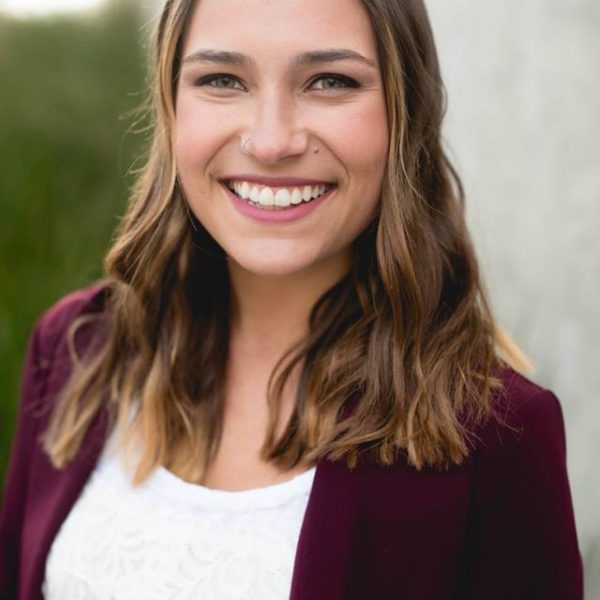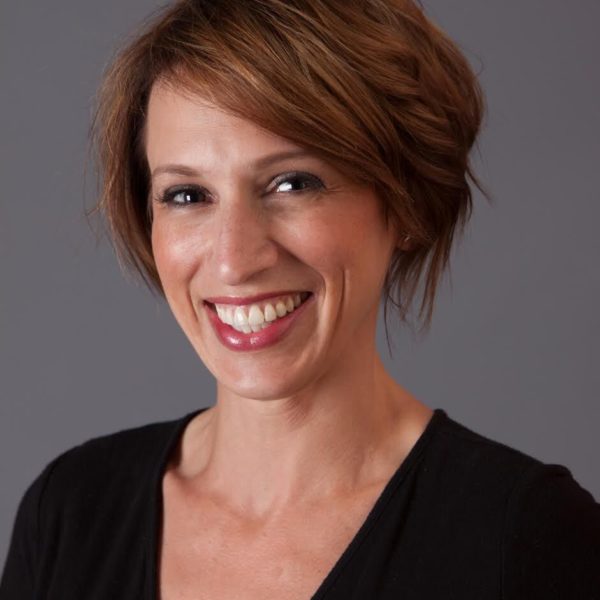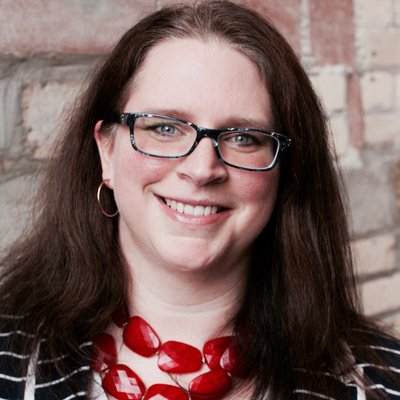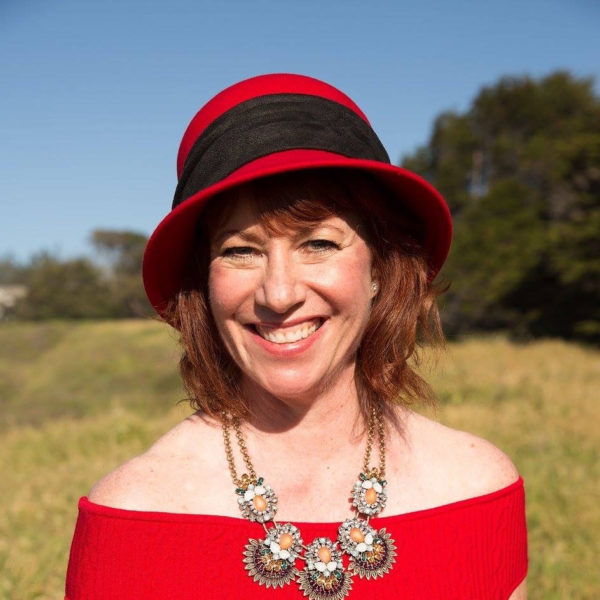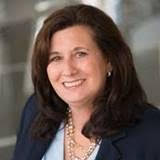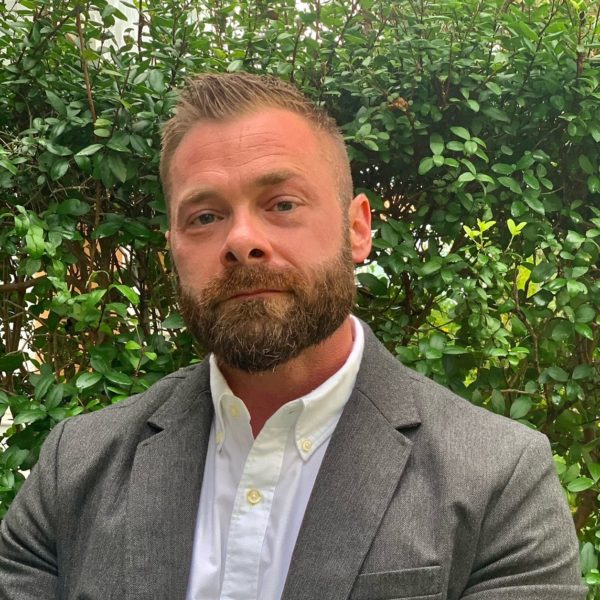Book Club: Lisa Goldman on Building Strong Professional Relationships
2.4K Views | 19 Min Read
Olivia Fuller: Hi, and welcome to Book Club: a Sales Enablement PRO podcast. I’m Olivia Fuller. Sales enablement is a constantly evolving space and we’re here to help professionals stay up to date on the latest trends and best practices, so they can be more effective in their jobs.
Today, I’m so excited to welcome Lisa Goldman. She is the author of The Moonshot Effect. Lisa, thanks so much for joining us. Could you please take a minute and introduce yourself to our audience?
Lisa Goldman: Thanks, Olivia, good morning to you. Good morning or whatever time of day to anyone who’s listening to this. I’m really thrilled to be here.
I’ve been a management consultant for about 30 years. I started my career at Apple and I’ve since worked with about 350 companies, probably over 4,000 executives in business of all kinds and it’s really allowed me — the reason I’m telling you that is to illustrate how well it’s allowed me to really steal best practices from all kinds of industries and great people.
If I had a talent at anything it’s at copying, and that’s what I’m here to talk about today — those things that I’ve seen that are really outstanding and worth copying and replicating in one’s business and one’s business practices because they work so well.
OF: Lisa, like I said, we’re so excited to chat with you today. Sales enablement is a highly collaborative role and professionals often need to work very closely with cross-functional stakeholders across the organization. And in your book, The Moonshot Effect, you discussed the impact of fundamental people skills and building alignment in the workplace. What are some techniques that leaders can use to better connect and then create resonance with those that they work with?
LG: Yeah, I would say that there are so many books written on this and so many things around creating that alignment and resonance with people that you work with. I’m going to boil it down to one thing. I’m going to make it really easy.
And that one thing is “create partnership.” People like to work with others that they feel in partnership with. You like to have friends that you feel in partnership with, you like to create with people who you feel you have some kind of partnership with.
And, although many people get that kind of by chance in their lives, there really is a technology to it that you can do. Creating a partnership, first of all, starts with identifying the people that you want to create partnership with. Salespeople are really good at this and sales enablement people, I think out of their halo effect with salespeople, become good at that also.
So that’s really step number one, find the people who, if you created a great partnership with them would make the biggest difference. Pick three people, set your sights on them and literally write them down. So that’s step number one, identification.
Step number two is it’s got to come out of your mouth. You have to literally say to the person — I have an intention of creating a partnership with you. And the reason I want to create that partnership is, so this is step number three — is the end of that sentence. Is set a goal that you are inviting them to work with you on. I’d like to create a partnership with you so that we can increase the number of people who we have in our sales training by two X, by the end of the year, or whatever that thing would be. So, if step one is identify the person, step two is say your intention, specifically, and step three is state what the goal is.
Then there’s a fourth step. This is a really easy step, but nobody does it. Very often, people do the first three. Step number four is, will you participate with me in that? Ask them the question. You don’t get married by falling into it. Someone’s got to ask somebody. So, will you participate in that with me? We don’t know what we’re doing yet, but let’s do that together. Are you willing to go along?
And 99% of the time people say yes. When they say yes, something magic happens, and that’s what we’re talking about. That’s what real partnership and that resonance gets created. You don’t have to leave it up to chance. You can have it happen any day, every day.
OF: Absolutely. You also wrote about the importance of showing genuine appreciation for the work of others. Can you tell us a little bit about why that acknowledgment piece is so critical to building professional relationships?
LG: Yeah, so here’s what I think. I’ve worked in, as I said, 350 companies all over the world in China, in Japan, in many countries in Europe, in all over the parts of the US, all industries. People are at their core very, very similar. And what I think is that — I’m actually getting goosebumps thinking about it — what really is at the heart of it is people want to make a difference. They want to. They want to participate in something that they know is going to make a difference and do it with other people. So, you mirroring your appreciation for them knits them into that system very tightly. And it’s them knitting them to you. So, the importance of acknowledging people’s contributions is that you’re giving them exactly what they came for. That’s what they come to work for every day.
OF: In your book, you outlined four different levels of acknowledgment. Could you tell our audience a little bit about what each of those different levels represents?
LG: I think acknowledgment, like partnership, can be left to chance or kismet or chemistry.
So, as you referred to in my book, we refer in the book to four steps of acknowledgment and they’re not linear steps. One is not better than the other — they’re different flavors, really. If I scream each one more complicated, you might start with vanilla. Hey, vanilla is the basis of some pretty fantastic desserts. So sometimes you need vanilla, right? It’s not like it’s wrong and the fourth level is better. I want to outline them so people can see various moves in the game that they could use, aspects of the tool.
The first is, acknowledging it’s about the thing. I sometimes call it “nice tie acknowledgment.” Like, oh, that’s a nice tie, that’s a beautiful blue color on you. That’s a great background that you have, you’re in sales enablement background. That’s a really clear report that you gave at the presentation yesterday.
It’s about the thing. It’s the thing. That kind of acknowledgment is terrific and wonderful. It’s also just about the only kind of acknowledgment that most people use. It feels low risk, like you can do it without feeling too embarrassed. You might embarrass the other person, and in fact, sometimes people go, Oh no, no, no, no, that was just our first try or, you know, try to back away from it. That’s interesting but it’s still powerful. So, the first level of acknowledgement is about the thing.
The second level of acknowledgment is about you — you and the thing. “I really appreciate, and in fact I do appreciate that you wore that color today. It’s so easy to see you on the screen and it’s really easy and clear for me to look at you. It’s great that you chose that color. Your presentation, your clear presentation in the meeting yesterday — I really appreciate how much detail you were able to convey in some very simple ways. You really have a talent at simplifying things without making them then be throw away or belittled.” So, the second level of knowledge acknowledgment is about you. The person that I’m acknowledging.
The third level of acknowledgment is about me. Most people don’t like this, they don’t want to do this thing. So, what that looks like is, “I saw the video that you did and the blue blouse that you wore that made it so easy to see you. And I realized, I am on Zoom all day long and I don’t pay attention to what I’m wearing so people can see me well, and it inspired me to relook at that. And I’m not going to do that anymore. I’m not going to wear an old brown t-shirt.”
So, it’s about what you inspired in me. “The clarity of the presentation that you made yesterday. The way you simplified those complex ideas — I had meeting with my team the following day, and I asked them: “Could we take the first 10 minutes to simplify something that we’ve been working on that’s been so complex? And in fact we’ve been complexifying it and instead we simplified it and it changed the entire relationship that people had to this project. It’s about what your thing inspired in the world.
Now, the reason this is so important is this: people want to make a difference. As I said before, this is the juice. People are talking about someone who has a loyal group of people who work with them and when they go to another company, those people would follow them. This is why — they know that what they do, their contribution is valued and makes a difference and they’re told so and this is why people come to work.
It is the cure, by the way — sidebar, it’s the cure for overwhelming burnout. People get overwhelmed and burned out because they’re just on the gerbil wheel and working, working, working, and lots of activity and it doesn’t make a difference. When you let them know that it makes a difference and what difference that is — huge. This is huge. It reinvigorates people.
The fourth level is — I’m going to call it the “so that” of it all. It’s not only did you make a difference, but you made a difference “so that” we all can walk into a different future together. “So that” the fact that my team now knows how to simplify things, it now allows us to have a much more of an impact on the strategy that our company, delivers and does in this market. And we never would have had that opening before. It points everyone towards the future and keeps people aligned and knitted together in a way that is so easy to do, not almost never done, and people are hungry for and missing. So those are the four levels.
OF: That’s fantastic. What does positive acknowledgment look like in practice? How can leaders really make it a habit to acknowledge the work of others in a productive way?
LG: When you’re using the word habit — I love that you’re using the word habit, it’s very powerful.
So, I have a habit of not going to the gym. I gotta tell ya, that’s my habit, right, of not going to the gym? And how I change that habit is I have a friend and I’ve told her I’m going to go to the gym four times this week. Well, not now because we’re enjoined from going to the gym, but in regular times, and I call her up every day that I go to the gym and I keep a little track.
And that’s how you change a habit. Having a habit to do something means you have to declare it as a goal. One of the things I often suggest to people is that they literally take a post-it note and write on it, “I’m going to suggest three acknowledgments today” and they stick it in their office or on their computer or their calendar where whatever is upfront for them. And sometimes you might want to up the challenge and say three acknowledgments before 10:00 AM or before 9:00 AM if you want to get it out of the way.
Having a daily goal is what’s required to change a habit. Waiting for the opportunity, it will never happen. It has to come from you taking a step into the world rather than make waiting for the world to indicate that it’s now time, like somebody does such a great report or that you are inspired to say something.
One of the examples that I use and I actually do often is I challenged myself to acknowledge every barista who makes any coffee for me. And sometimes I’ll forget and I once forgot, I got all the way out to my car and I turned around and went back and said, “I have to tell you, this is one of the best – it happened to be true — one of the best coffees I’ve had in a long time. Thank you so much for making it this way.” And she stopped dead in her tracks and looked like she’d been hit by the love bug.
It really made a difference to her. The opportunity is everywhere, and it’s not about opportunity. It’s about intention. That’s how you make a habit.
OF: How can professionals go about really intentionally developing and maintaining those relationships in their professional networks?
LG: One of the things that I heard from a very senior sales head of sales for a multinational 20,000 person company here in the Bay area, she said very specifically about sales enablement that the key to success for sales enablement was being able to create these kinds of things.
Being able to scale, and scale means you have to have that powerful partnership and be aligned on what the outcomes are so that you can track them and deliver them. And all of that requires intentionally developing and maintaining relationships.
So, in addition to the partnership, things that I referred to earlier, I think there are some very clear, easy, very low tech — I am going back into the stone age of low tech because it works so well — things to do. One of the things I recommend if you are wanting to expand your network into other companies or other sectors — people outside your company, or if your company is large enough, even people inside your company — set a Google alert for that person’s name, set a Google alert for that person’s company. And anytime something comes up, send them an email and say, “I saw this, congratulations,” or say something about it so that they know there’s someone out there in the world.
Here’s what I can tell. I do this with every client, every company I work with or have ever worked with. Here’s what I can tell you. Nobody sends them emails about that. You will show up as one of none and that’s great. So that’s a very low-tech thing to do and you don’t have to search the newspaper. It will come to you.
The second thing is — I am a fan of handwritten notes. I worked with a CEO of a very large company on the East coast in retail actually, and she did something brilliant. She wrote a handwritten note to one of her employees and there were 12,000 employees — one of her employees every day, every single day she wrote a handwritten note to somebody. 99% of the time they were somebody she didn’t know, so she had to randomly pick somebody and then find out something about them and write them a thank you note about the contribution that they were making.
This made her hugely likable. People would frame them, they would show everybody. A thank you note is very, very powerful. One of the easiest things you can do: get on Amazon and order a bunch of really fantastic cards. They could be from a museum or just some really high-quality cards that you can mail and send one a day for thirty days and see what happens. That’s something you can do. You can do it to people inside your company, on your team. If you know that it’s somebody’s birthday and this also will help you craft your ability to acknowledge, but those are things that I would suggest.
The third thing is that companies have boards, but people don’t often think about having a board for themselves. And that’s something you can do. You can decide, I’d like to have a board of advisors and I’d like to invite four people to join my board of advisors and certainly in pre-COVID times you could take them out to lunch once a quarter, but maybe you have something fun, where you have a Zoom call and you’ve arranged for everyone to have lunch delivered to wherever they are. And have a board meeting once a quarter that’s your board, or to have advisors. People don’t need anything else than that. People love the invitation. I’ve never heard anyone report back that someone said no to them for that. So that’s a great way to build your network as well.
OF: Lisa, thanks so much again for taking the time to talk to us today, we really appreciated your insights.
LG: You’re so welcome. It really was my pleasure. Thank you for thinking of this and thank you for doing it too.
OF: To our audience, thanks for listening. For more insights, tips, and expertise from sales enablement leaders, visit salesenablement.pro. If there’s something you’d like to share or a topic you’d like to learn more about, please let us know.
We’d love to hear from you.
